Friends, we don’t want you to think that all we do is trek around wintry European countries, eating schnitzel and drinking wine. No, sometimes we also visit delightful urban hydroponic farms and we eat handfuls of just-harvested fresh greens. Balance. It’s all about balance.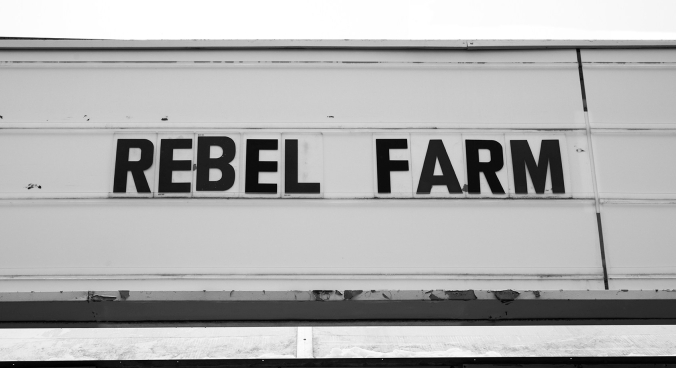
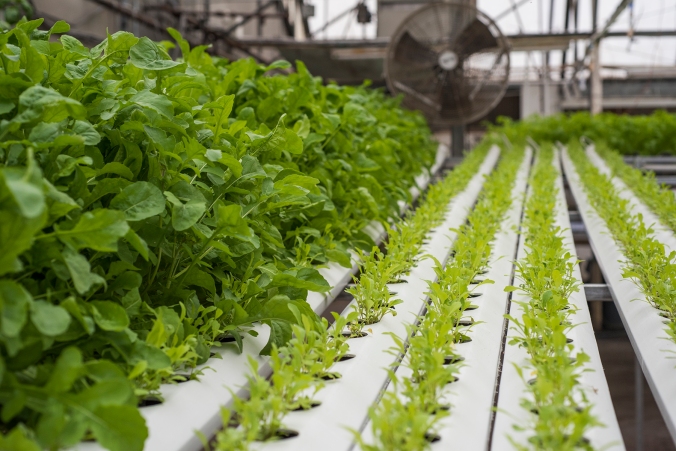
Rebel Farm, run by Jake and Lauren, is a 15,000 square-foot hydroponic greenhouse on the border of Denver and Lakewood. For those readers who live in Colorado, you may well wonder how these fine folks can afford to grow lettuce, rather than weed, considering that just about every greenhouse in the state has been snatched up by the marijuana industry. In the case of Rebel Farm, however, the greenhouse is perfectly situated between two schools – which means it cannot be a grow operation, and instead it can grow food. Brilliant.

Purple kohlrabi, sadly underappreciated by CSA members everywhere.
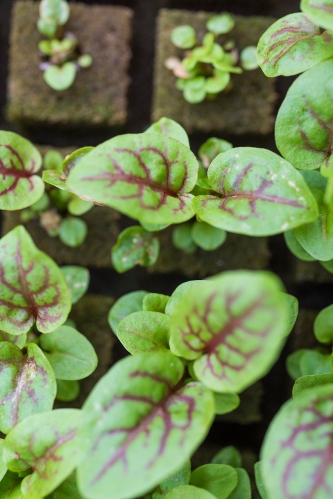
Tangy, citrusy red sorrel.
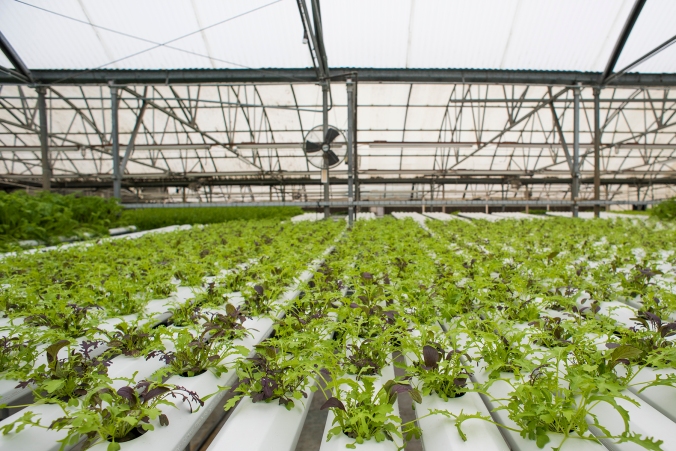
If you’re not familiar with hydroponics, don’t feel alone. In its simplest form, hydroponics is a method of growing plants without soil. The plants can be planted in gravel, sand or other inert materials, or their roots can be suspended in a nutrient-rich water mixture. There are lots of different ways to grow hydroponically; Rebel Farm uses the NFT, or nutrient film technique, method.
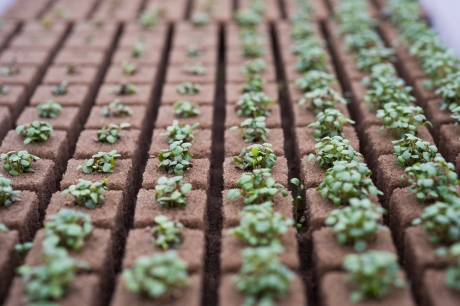
Plants start as seeds in these tiny biodegradable cubes. Once they’ve reached a certain size, they’re transplanted into the growing chambers, which basically look like standard house gutters turned upside-down, with regularly spaced holes for the plants. They’ll spend the rest of their lives here, with their roots comfortably tucked into nutrient-rich water constantly circulated through the system. They can be harvested at any size, depending on the customer’s precise order.
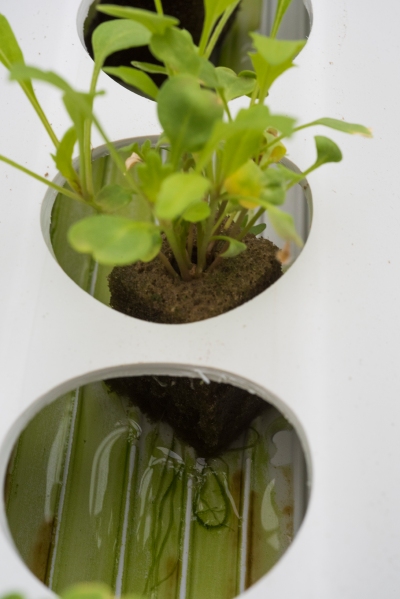
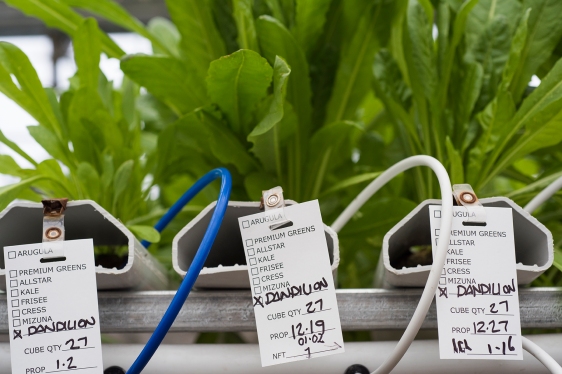
Oh yes, chefs are willing to pay for the plant most hated by suburban homeowners.
The advantages of growing hydroponically are numerous. First, it’s an incredibly efficient manner of growing; the plants use precisely the amount of water and nutrients they need, and that water can be cycled through the system again and again before it has to be refreshed. Second, the farm isn’t subject to the vagaries of weather, which in Colorado are many. Windstorms, hailstorms, tornadoes, blizzards, heat waves, floods – we have all of these here, and more, and this drama understandably wreaks havoc on crops. Third, growing in a greenhouse allows for a virtually pesticide-, insecticide- and herbicide-free environment, because disease and pest pressure are nowhere near what they would be outside.
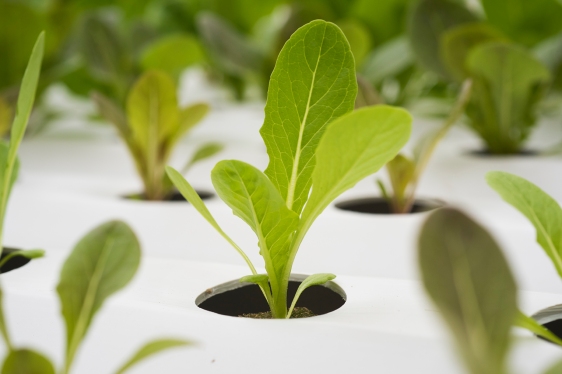
Hydroponic food crops, such as these greens and herbs, are also much fresher, because they can be harvested to order. Most of the “fresh” food we buy from the grocery store was harvested at least seven days ago, if not more, and nutrient values decrease every minute those crops are out of the ground. Rebel Farm, on the other hand, delivers its products with the roots still attached, ensuring vibrancy, nutrition, and most importantly, flavor.

Rebel Farm sells its greens and herbs to many of Denver’s best restaurants, so flavor is paramount. Top-tier chefs aren’t interested in local food just for the sake of local; they want local food that also tastes amazing. Denver chefs are willing to pay for Rebel Farm’s products because they taste better than the mass-produced, chemically-doused junk they can get in huge bags from California. Guests at these restaurants pay $25 and up for a main course, and spending a few pennies more for spicy, piquant arugula or crisp, vibrant bok choy does matter. Plus, Rebel Farm’s products last longer, because they’re sold live, with the root still attached. When food cost on that arugula or bok choy is everything, shelf life matters, too.
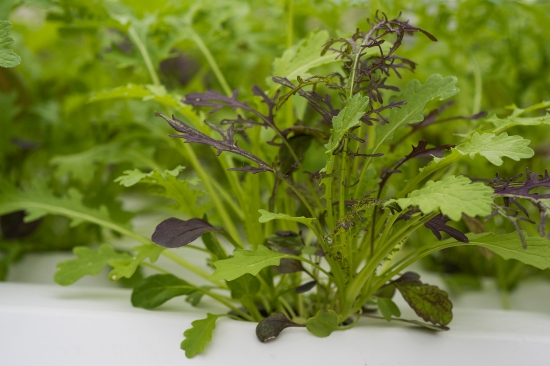
Growing food hydroponically is becoming more of a viable reality. In Colorado, of course, farmers struggle with both access to land and access to water. Well-run hydroponic operations can bridge this gap, allowing nutritious food to be grown with very little water and in areas that haven’t traditionally had access to quality food. Although hydroponic systems are pricey and labor-intensive to set up, once they’re established they can produce an astonishing amount of food. Hydroponic operations like Rebel Farm are key to completely revolutionizing the outdated agricultural economy in both the U.S. and the world. This technology is the way forward in a changing and volatile climate.

Smart greenhouse operations like Rebel Farm take advantage of one thing Colorado has in abundance: sunlight. With over 300 sunny days every year, growing in a temperature-controlled greenhouse is much more efficient than buzzworthy hydroponic operations in repurposed shipping containers and other unique spaces, simply because these dark spaces require lots of artificial light. And while hydroponics may be more efficient in terms of water use, marijuana businesses in Colorado and elsewhere have faced strong criticism for their insatiable appetite for electricity. It’s simply not a sustainable operation if overconsumption of fossil fuels (in this case, for grow lights) is still the only way to grow plants.
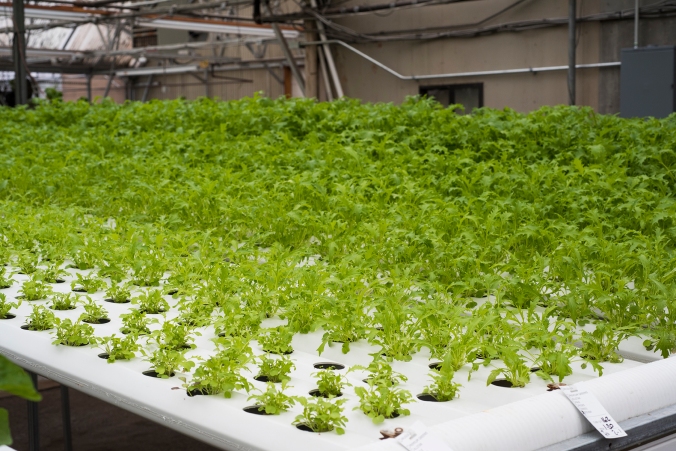
As aspiring farmers, we try to visit as many farms as we possibly can. Our visit to Rebel Farm reminded us that not all sustainable, innovative, productive farms are fifty acres of soil out in the middle of nowhere – some are mad scientist set-ups right in the heart of the city. Thank you, Jake and Lauren, for sharing your space and your delicious greens with us, and for showing us urban farming done right.
P.S. I’m teaching a ninety-minute workshop on urban gardening in Lakewood on Saturday, March 3 from 1:00-2:30PM. We’ll discuss bees, backyard chickens and growing vegetables. Come learn how to start your own urban farm! Tickets are $10; more details and registration information here.
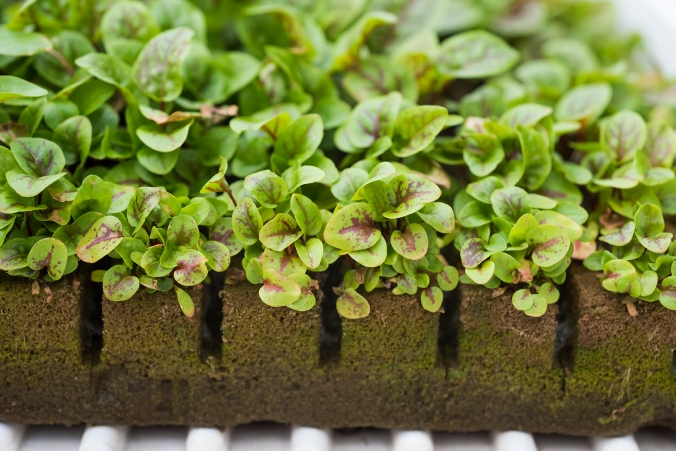
One thing that worries me about hydroponics is their nutrient source are essentially vitamin pills, right? We can’t live on vitamin pills alone so I wonder if that transfers to hydroponics? I wonder if there is something missing intrinsically that we haven’t figured out yet? I’ve read elsewhere that hydroponic veg contain the same nutrients as those grown in soil and I buy those veg periodically. Still, it’s unnatural and I wonder if sometime in the future we’ll learn that it wasn’t such a great idea…or we might learn that it’s better than nature intended. Who knows?
LikeLike
Hi Marty! I completely agree with your concerns, and I too think growing in soil is the best option. Soil is such an incredibly complex system –
a billion organisms in a teaspoon! Vitamins in water can’t replicate that. Unfortunately, however, most of our soil is completely dead, thanks to decades of synthetic inputs and monocropping, and the rest of it has been paved over. The food we’re growing in that dead soil doesn’t have much nutrition to offer, either. Hydroponics offers a decent solution to some of the problems we’ve created, but it’s definitely true that our own shortsighted decisions got us here. Thanks for reading and for sharing your thoughts!
LikeLike
Thanks Elizabeth for the Rebel Farm info. I stopped by there once to take a look, they said they weren’t open to the public, I did sneak a peak though. I tried hydroponics in my greenhouse during the winter months, had good luck with the baby Persians, and some greens. The cost of the nutrient solution made it really expensive, organic solutions were even more. Glad I didn’t have a lot invested in equipment, made my own systems. I think it’s an answer to food shortages in many parts of the world, even in this country.
LikeLike
Thanks, Jim! It definitely requires some initial investment, but I too think it could be an answer to food distribution and locality challenges. Now if only we could get everyone to stop growing lawns and grow food instead…
LikeLike
Pingback: Sausages and laws | Finding Quiet Farm
Pingback: How to grow microgreens | Finding Quiet Farm